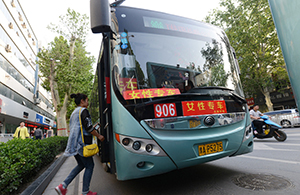China and global monetary system
By Lee Il-Houng (China Daily) Updated: 2012-11-07 07:52The reason why the US dollar is so highly sought after as a reserve currency is not only because it satisfies these requirements, but also because the financial depth of the US dollar market provides assurance that investors can convert their dollar-based assets into goods and services at anytime anywhere in the world.
What is the relationship between the US dollar's reserve currency status and global imbalances? The US, as the issuer of the main reserve currency, has a free floating exchange regime. Thus, it has full monetary policy independence and allows its exchange rate to adjust to any imbalance. However, global market response to monetary policy in the US may not necessarily be consistent with the intended response because of the large global demand for the reserve currency and the choices on the exchange rate regime made by other countries.
In fact, many countries especially in Asia following the financial crisis in the late 1990s have accumulated large amounts of reserves in US dollars as an insurance and buffer against external shocks. Moreover, China's economic success, reflected in the faster productivity growth, expressed itself partly as an imbalance because the relative currency adjustment moderated by the choice of the exchange rate regime was slower than the changes in the unit labor costs. Such an occurrence is not uncommon, except that this time, the imbalance became a global issue owing to the size of China.
China has been trying to address this challenge by promoting the renminbi as a reserve currency and increasing the flexibility of the Chinese currency. In fact, internationalization of the renminbi has come a long way in a very short period of time. While it was initially supported by expectations of the renminbi's appreciation, especially in the Hong Kong market, there has been a steady demand for cross-border trade settlement reflecting the large size of China's trade volume. In addition to the Hong Kong Special Administrative Region, renminbi settlements now also take place in London, and are likely to expand to Asian cities.
However, the lack of access to renminbi-denominated assets impedes the scope of the currency's internationalization. At the same time, capital account convertibility cannot be blindly accelerated because it needs to be accompanied by domestic financial sector liberalization and strengthened regulatory framework.
One possible approach would be for Asian countries to use some of their currencies, with the renminbi playing an important role, for the settlement of the current account transactions in the region. ASEAN+3 GDP is already as large as the US GDP, and much progress has been made in vertical trade integration among these economies over the last decade. Intra-Asia current account flows would be large enough to help speed up renminbi internationalization without the need to accelerate capital account convertibility at the cost of risking domestic financial market stability. This process will also reduce the demand for the US dollar as a reserve currency, allowing the US monetary policy to have a more direct impact on its own economy.
Moreover, if their exchange rates become more flexible, Asia's currencies are likely to appreciate against the US dollar because of their relatively faster productivity growth and help global rebalancing. And stable cross exchange rates would further promote intra-Asia trade which could also be a solution to Asia's search for a new growth model as it now faces less robust demand from the advanced economies and less investment growth in China.
The author is the IMF's senior representative in China. The views expressed in this article are the author's own and do not necessarily represent those of the IMF or IMF policy.
(China Daily 11/07/2012 page9)

I’ve lived in China for quite a considerable time including my graduate school years, travelled and worked in a few cities and still choose my destination taking into consideration the density of smog or PM2.5 particulate matter in the region.











